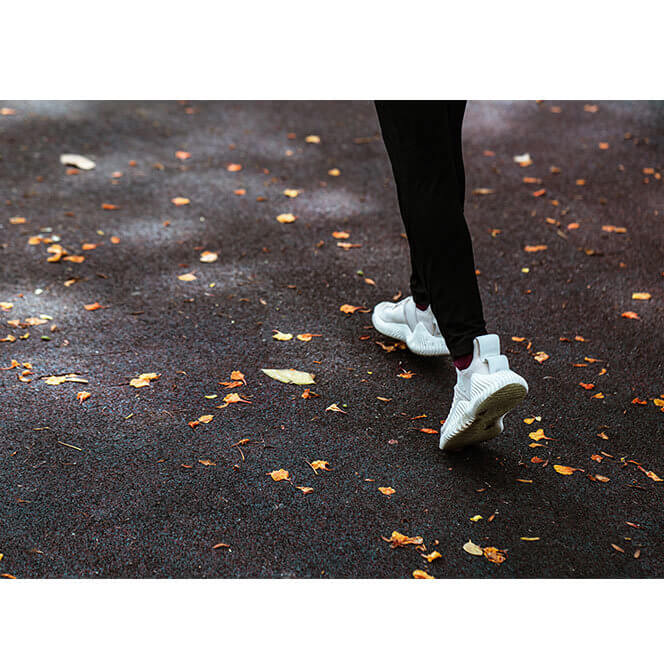It is undeniable that the Covid-19 pandemic has shaped attitudes towards food, exercise and social media. The promotion of getting fit and losing weight bloomed throughout the three lockdowns as media outlets advocated that self-isolation was the time to redefine oneself. The effect of this pressure and the dangerous entanglement of the body and social media needs to be urgently addressed. Thus, through interviews and gendered focus groups, I completed a research project that investigated if the idolisation of health during the pandemic has affected body image. Funded by the Laidlaw research scholarship, this project was titled: “Idealised bodies and health in the pandemic”.
This project explored 3 core relationships: exercise, food and social media.
Exercise
The pandemic presents researchers with a crucial opportunity to explore relationships to exercise and how it can be influenced by societal structures. Whilst many studies conclude that anxiety and depression rose during the 3 lockdowns (Pfefferbaum and North 2020, 511), exploration of how the idolisation of health has morphed body image has been overlooked. Yet, awareness of fitness and physical health has consistently been at the forefront of the societal mind; participants in the project noted that during the lockdowns, the promotion of exercise felt almost inescapable: “[it] blended into one so it wasn’t like you were looking at various different people doing the half an hour exercise a day; it was just constant doing exercise.”
It is wholly understandable that during such a mentally exhausting time, the gratification promised by exercise became an escape, as well as a tool individuals used in order to exhibit success and self-control throughout the pandemic. Crossley’s (2006, 1) reflexive embodiment notes that every individual has the autonomy to “perceive, emote about, reflect and act upon one’s body”. It is, therefore, unsurprising that many participants became fixated on exercise routines and thus, their body. Furthermore, it is critical to note that these goals were heavily gendered; one male participant stated that: “I got it ingrained in my mind that I’d be a lot happier with big muscles, big abs…” as well as noting that his diet became focused on foods that would help him “bulk up”, whilst many female participants noted that they would restrict eating and would be motivated to exercise by wanting to become thin. Furthermore, this infatuation to achieve gendered body goals was also present amongst female individuals who struggled to motivate themselves to follow regimented diets and workouts; one participant explained that isolation made them more aware of their body and whether it conformed to societal standards: “being at home by yourself looking in the mirror every day and… thinking oh my god, I need to work out.” Thus, it is evident that the surge in exercise was not wholly motivated by health; body expectations also played a significant role.
Food
Similarly to exercise, food became an outlet to exert control in an unprecedented situation. The majority of participants noted that their mealtimes either became more structured or began to lack consistency. In particular, individuals living with their family or partners found that mealtimes became a staple part of their day; they would plan, prepare and cook the meal throughout the day in order to quench any boredom: “It was very much waiting for the next meal… and so I started eating a lot more, started baking a lot more and it was, uh, because there was nothing else for me to do.” Additionally, the boredom that ensued from the lockdowns led to a rise in comfort eating which was aided by the government’s recommendation to go shopping once a week; the increased amount of food in the home led to a rise in snacking. One participant noted: “my mum went and she bought loads of food at once. So we’re not used to that… she bought a big bag of sweets and sugary stuff that we could eat while we were watching TV.”
Touyz et al (2002, 2) critically notes that being surrounded by food can be triggering for individuals and encourage disordered eating. Thus, it is no surprise that this study noted a significant rise in detrimental relationships with food; many turned to food for comfort during the pandemic, whether through restriction or indulgence: “it was kind of like a comfort blanket in a way, like a self-destructive comfort blanket.”
Social Media
Social media can be linked to these changes in individuals’ relationship towards food and exercise. The compoundment of media and the pandemic has heightened individuals’ attention towards how they look and the modification of their bodies. There were increased levels of social media activity, as many noted that it was the only way to stay in contact with friends and families; society had temporarily moved online. Many found that social media, particularly apps such as Tik Tok and Instagram, played a more influential role than before.
The constant stream of exercise and new food recipes motivated individuals as well emphasising body expectations: “all these personal fitness trainers, posting videos and… exercising… and I sort of did think, oh, maybe if I did all that exercise, I could have that body.” The undeniable influence of social media catalysed a change in individuals’ relationships with food and exercise through the continuous promotion of looking and living a certain way.
However, it is important to note that there was an evident gender divide; whilst all participants noted a disruption in all three relationships explored, all female participants admitted to a hyper-fixation on their body image and their diet; it became apparent that feminine beauty goals were more overt in the media. Furthermore, many felt that the intense exposure to media concerning exercise and diet led to them being more aware of their body and often led to bouts of self-hatred. Feminist scholars have previously concluded that mass media has constantly fixated on how women look and thus, this has become a major determinant of women’s self worth (Powlinson 1997, 40). Social media has promoted the detrimental relationships with food and exercise that many experienced during the pandemic; the increased fixation on bodies and health compounded with the heightened use of apps meant that emphasis on body image was almost inescapable.
Evidently, many individuals controlled food and exercise in order to feel they had power in an unprecedented time. Social media enhanced this need for control and the increased exposure to body image expectations encouraged damaging behaviours. The pandemic has disrupted life in many ways and from discussing interviewee’s experiences, it is clear that the idolisation of health in the pandemic has fuelled the rise of detrimental attitudes towards food and exercise.
References
1. Crossley, Nick. 2006. Reflexive Embodiment in Contemporary Society: The Body in Late Modern Society. New York: McGraw-Hill Education.
2. Pfefferbaum, Betty, and Carol S. North. 2020. “Mental Health and the Covid-19 Pandemic.” The New England Journal of Medicine, no. 383 (August), 510-512.
3. Powlinson, David. 1997. “Your Looks: What the Voices Say and the Images Portray.” Journal of Biblical Counselling, no. 15, 39-43.
4. Touyz, Stephen, Hubert Lacey, and Phillipa Hay. 2020. “Eating Disorders in the Time of Covid-19.” Journal of Eating Disorders 8 (19).
Lorna Pepperill is an Undergraduate Laidlaw Scholar at Durham University.


